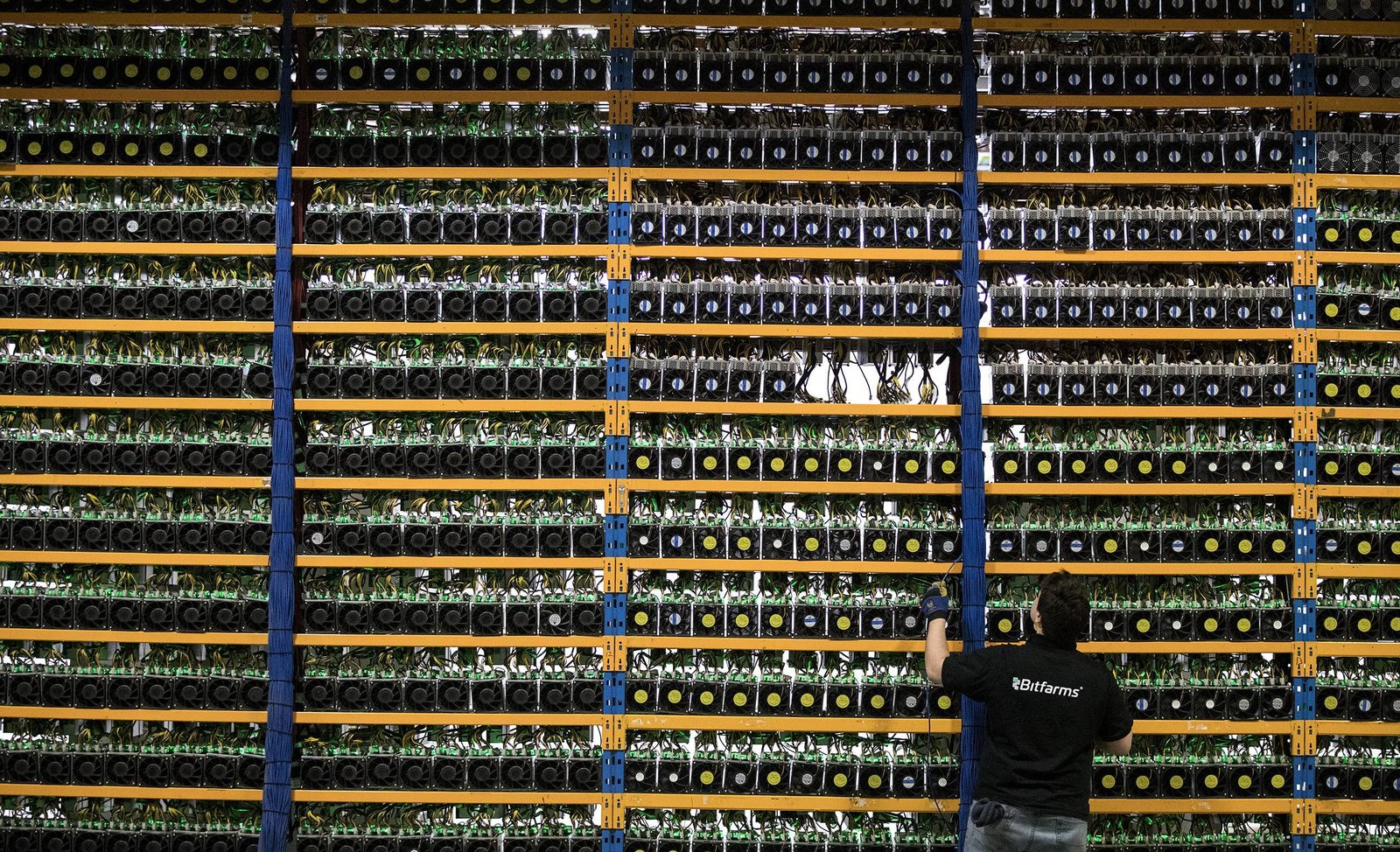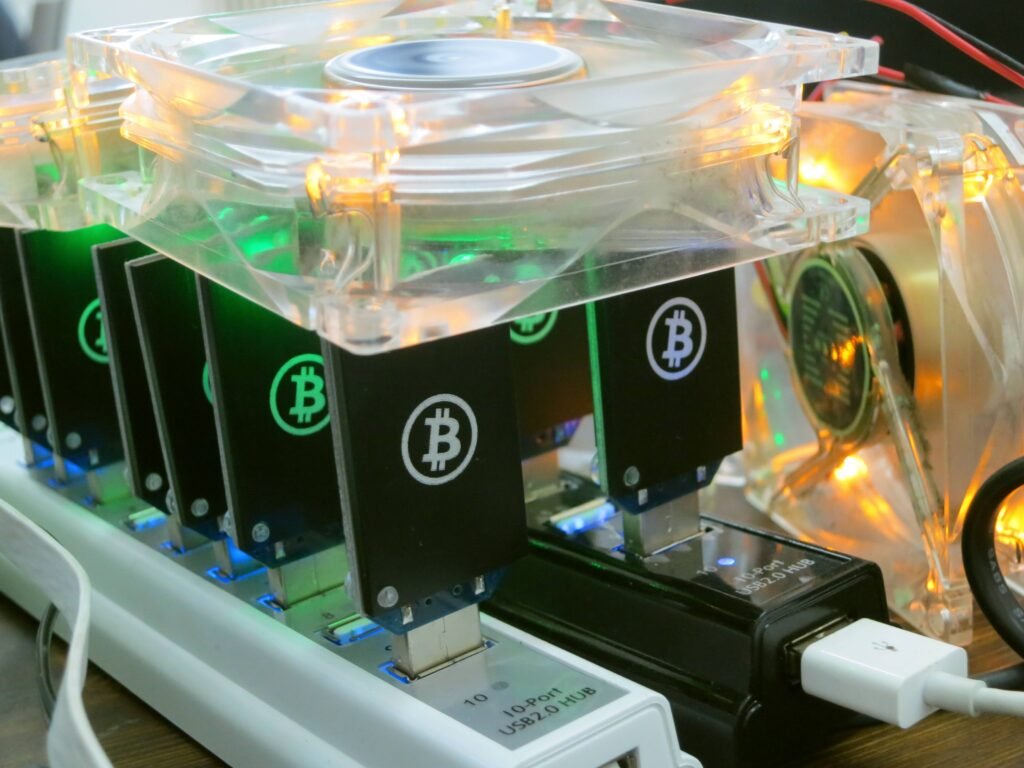Bitcoin mining pool payout methods are crucial for any cryptocurrency miner looking to maximize their earnings and make informed decisions about which mining pools to join. With the increasing complexity of Bitcoin mining and the growing competition in the network, individual miners have turned to mining pools to combine their computational power and share rewards collectively.
The choice of payout method can significantly impact your mining profitability, risk tolerance, and cash flow consistency. Different bitcoin mining pool payout methods offer varying levels of predictability, variance, and reward structures that cater to different mining strategies and preferences. Whether you’re a beginner miner or an experienced professional, selecting the right payout method is essential for optimizing your mining operations and ensuring steady returns on your investment.
In this comprehensive guide, we’ll explore the most popular payout methods used by mining pools, analyze their advantages and disadvantages, and help you determine which approach aligns best with your mining goals and risk appetite.
Understanding Bitcoin Mining Pool Fundamentals
Before diving into specific payout methods, it’s important to understand how mining pools operate. A mining pool is a collaborative effort where multiple miners combine their computational resources to increase their chances of successfully mining Bitcoin blocks. When the pool successfully mines a block, the reward is distributed among participants based on their contributed hash power and the pool’s chosen payout method.
Mining pools serve as intermediaries that coordinate the mining efforts of thousands of individual miners worldwide. They provide mining software, maintain servers, and handle the complex process of distributing rewards fairly among participants. The pool operator typically charges a fee ranging from 1% to 3% of the total rewards for providing these services.
The effectiveness of a mining pool depends on several factors, including its hash rate, server stability, fee structure, and most importantly, its payout method. Each method represents a different approach to calculating and distributing rewards, affecting both the timing and amount of payments miners receive.
Popular Bitcoin Mining Pool Payout Methods

Pay Per Share (PPS) Method
The Pay-Per-Share method is one of the most straightforward and predictable bitcoin mining pool payout methods available. Under this system, miners receive a fixed payment for each valid share they submit, regardless of whether the pool successfully finds a block or not. This method provides immediate and consistent payouts, making it attractive to miners who prioritize steady income over potentially higher returns.
PPS operates on a predetermined rate calculated based on the current network difficulty and block reward. The pool essentially guarantees payment for your contributed work, absorbing the variance risk associated with finding blocks. This means miners receive payments even during unlucky streaks when the pool doesn’t find blocks for extended periods.
However, this stability comes at a cost. PPS pools typically charge higher fees, often ranging from 3% to 7%, to compensate for the increased financial risk they assume. Additionally, some pools may reduce payout rates during periods of high network difficulty or implement daily payout limits to manage their exposure.
The main advantage of PPS is its predictability, making it easier for miners to calculate expected earnings and plan their operations accordingly. It’s particularly suitable for miners who prefer guaranteed returns and want to minimize the impact of mining luck on their income stream.
Pay Per Last N Shares (PPLNS) Method
Pay-Per-Last-N-Shares represents a more complex but potentially more rewarding approach among bitcoin mining pool payout methods. This system calculates rewards based on the last N shares submitted by miners when the pool finds a block, where N is a predetermined number set by the pool operator.
PPLNS rewards are distributed proportionally based on the number of shares each miner contributed within the specified window. This method aims to discourage pool hopping – the practice of switching between pools to maximize profits – by only rewarding miners who consistently contribute to the pool’s efforts.
The key characteristic of PPLNS is its variance. During lucky periods when the pool finds multiple blocks quickly, miners can earn significantly more than the theoretical average. Conversely, during unlucky streaks, earnings may be lower or even zero for extended periods. This variance makes PPLNS more suitable for miners who can tolerate income fluctuations in exchange for potentially higher long-term returns.
PPLNS pools typically charge lower fees compared to PPS pools, usually ranging from 1% to 3%, since they don’t assume the variance risk. The method also tends to provide higher average payouts over time, as miners share in the full block rewards without the pool needing to maintain reserves for guaranteed payments.
Proportional (PROP) Payout System
The Proportional payout method was one of the earliest bitcoin mining pool payout methods implemented, but has become less common due to its vulnerabilities. Under this system, rewards are distributed proportionally based on the number of shares each miner contributed during a round, which begins when the pool starts working on a new block and ends when a block is found.
In PROP systems, all shares submitted during a round are considered equal, regardless of when they were submitted. When the pool successfully mines a block, the reward is divided among all participants based on their share contribution percentage during that specific round.
While simple in concept, PROP is susceptible to topool-hopping attacks where miners can game the system by joining pools at optimal times and leaving before variance affects their returns. This vulnerability led many pools to abandon PROP in favor of more sophisticated methods like PPLNS or PPS.
Despite its drawbacks, some smaller pools still use PROP due to its simplicity and low administrative overhead. The method can work well for loyal miners who consistently contribute to a single pool, but it’s generally not recommended for pools with high miner turnover.
Full Pay Per Share (FPPS) Enhanced Method
Full Pay-Per-Share represents an evolution of the traditional PPS method, incorporating transaction fees into the payout calculation. While standard PPS only considers the block subsidy (currently 3.125 BTC per block after the 2024 halving), FPPS includes the transaction fees collected in each block, providing miners with more comprehensive compensation.
This enhanced approach addresses one of the main criticisms of standard PPS – that miners miss out on potentially significant transaction fee rewards. As Bitcoin transaction fees continue to grow in importance, especially following halving events that reduce block subsidies, FPPS becomes increasingly attractive to miners seeking maximum reward potential.
FPPS pools calculate payments based on both the fixed block reward and an estimate of average transaction fees. This method maintains the predictability advantages of PPS while ensuring miners don’t forfeit their share of fee income. The pool still assumes variance risk but benefits from the additional revenue stream provided by transaction fees.
The implementation of FPPS typically involves slightly higher pool fees compared to standard PPS, but the inclusion of transaction fees often results in higher overall payouts for miners. This method is particularly beneficial during periods of high network activity when transaction fees constitute a significant portion of total block rewards.
Comparing Risk and Reward Profiles
Different bitcoin mining pool payout methods offer distinct risk-reward profiles that cater to various mining strategies and risk tolerances. Understanding these profiles is crucial for making informed decisions about pool selection and payout preferences.
PPS methods offer the lowest risk but also limit upside potential. Miners receive predictable payments that closely match theoretical earnings, making financial planning easier but potentially missing out on above-average returns during favorable periods. This approach is ideal for miners with fixed operational costs or those who need consistent cash flow.
PPLNS and similar variance-based methods present a higher risk but offer greater reward potential. These systems can deliver exceptional returns during lucky streaks but may also result in extended periods of lower earnings. Miners choosing these methods should have sufficient capital reserves to weather variance and a long-term perspective on their mining operations.
Hybrid approaches like FPPS attempt to balance risk and reward by providing predictable base payments while capturing additional value from transaction fees. These methods often represent a middle ground for miners who want some stability without completely sacrificing upside potential.
Factors Affecting Payout Method Selection
Several factors should influence your choice among bitcoin mining pool payout methods. Your hash rate contribution relative to the pool’s total power affects how variance impacts your earnings. Smaller miners often prefer predictable methods like PPS, while larger operations may benefit from variance-based systems that offer higher long-term returns.
Operational costs and cash flow requirements also play crucial roles in payout method selection. Miners with high fixed costs, such as electricity bills or equipment loans, may prioritize consistent payouts to ensure they can meet their obligations. Conversely, miners with more flexible cost structures might choose methods that maximize long-term profitability despite short-term variance.
Risk tolerance varies significantly among miners and should align with payout method characteristics. Conservative miners who prioritize capital preservation typically gravitate toward PPS methods, while those comfortable with volatility may prefer PPLNS or other variance-based systems that offer higher potential returns.
The pool’s reputation, infrastructure quality, and fee structure should also influence your decision. Even the best payout method won’t benefit you if the pool suffers from frequent downtime, security issues, or excessive fees that erode your profits.
Pool Fees and Their Impact on Profitability
Pool fees represent a significant factor in evaluating bitcoin mining pool payout methods, as they directly impact your net earnings regardless of the payout structure. These fees compensate pool operators for maintaining infrastructure, providing customer support, and in some cases, assuming variance risks.
PPS pools typically charge higher fees, ranging from 2% to 7%, due to the guaranteed payout structure that requires the pool to maintain reserves and assume mining variance risks. These higher fees are often justified by the stability and predictability they provide, but miners should carefully evaluate whether the reduced variance is worth the increased cost.
PPLNS and other variance-based methods usually feature lower fees, typically 1% to 3%, since the pool doesn’t guarantee payments or assume variance risks. While these lower fees can result in higher net earnings over time, miners must factor in the potential for income variability when evaluating overall profitability.
Some pools implement tiered fee structures based on factors such as hash rate contribution, loyalty duration, or payment method preferences. Understanding these fee structures is crucial for accurately calculating expected returns and comparing different pools effectively.
Geographic and Technical Considerations
The physical location of mining pool servers can significantly impact your mining efficiency and, consequently, the effectiveness of different payout methods. Network latency affects share submission timing, which can influence your effective hash rate and reward calculations, particularly in time-sensitive payout systems.
Choosing pools with servers geographically close to your mining operation typically results in lower latency and more efficient mining. This consideration becomes even more important with certain payout methods that are sensitive to timing, such as PPLNS systems that calculate rewards based on recent share submissions.
Pool infrastructure quality, including server uptime, DDoS protection, and backup systems, affects all payout methods but can be particularly crucial for variance-based systems where downtime during critical periods can impact earnings significantly.
Advanced Payout Methods and Innovations

The cryptocurrency mining industry continues to evolve, leading to the development of new and hybrid bitcoin mining pool payout methods that attempt to address the limitations of traditional systems. These innovative approaches often combine elements from different methods to create unique value propositions for miners.
Pay-Per-Share-Plus (PPS+) represents one such innovation, combining the stability of PPS for block rewards with proportional distribution of transaction fees. This hybrid approach provides predictable base income while allowing miners to benefit from fee spikes during network congestion periods.
Shared Maximum Pay Per Share (SMPPS) offers another variation that provides PPS-style payments up to a maximum threshold, beyond which the system switches to proportional distribution. This method aims to provide stability while protecting the pool from excessive variance exposure.
Some pools experiment with difficulty-adjusted payout methods that modify reward calculations based on network difficulty changes, attempting to provide more stable earnings for miners despite Bitcoin’s automatic difficulty adjustments.
Security and Trust Considerations
When evaluating bitcoin mining pool payout methods, security and trust factors should never be overlooked. The payout method affects how and when you receive earnings, but pool security determines whether you receive them at all.
Reputable pools implement robust security measures, including cold storage for pool funds, multi-signature wallet controls, and regular security audits. These measures become particularly important for PPS pools that maintain large reserves to guarantee payments, as they represent attractive targets for potential attackers.
Transparency in payout calculations and pool statistics helps miners verify that they’re receiving fair compensation regardless of the payout method used. Pools should provide detailed information about their payout algorithms, fee structures, and historical performance data.
Regular and timely payouts are essential indicators of pool reliability. Delays or inconsistencies in payment processing can signal operational issues or financial problems that might affect your earnings regardless of the theoretical advantages of the chosen payout method.
Economic Impact of Bitcoin Halving Events
Bitcoin halving events, which occur approximately every four years, significantly impact the economics of all bitcoin mining pool payout methods. These events reduce the block reward by half, fundamentally altering the revenue dynamics for miners and pools alike.
Following halving events, transaction fees become increasingly important as a percentage of total block rewards. This shift makes payout methods that include fee distribution, such as FPPS, more attractive compared to traditional PPS systems that only consider block subsidies.
Pools may adjust their fee structures and payout methods in response to halving events to maintain competitiveness and profitability. Understanding how different pools have historically responded to halvings can provide insights into their likely future behavior and help inform long-term mining strategies.
Optimizing Mining Operations for Different Payout Methods
Successfully maximizing returns from various bitcoin mining pool payout methods requires tailoring your mining operations to align with the characteristics of your chosen system. This optimization involves considerations beyond simply selecting hardware and joining a pool.
For PPS systems, focus on maximizing consistent hash rate delivery and minimizing downtime, as these methods reward steady performance over variance-based profits. Stable internet connections and reliable power supplies become critical for maintaining predictable earnings under PPS structures.
PPLNS optimization requires a different approach, emphasizing long-term pool loyalty and consistent participation. Pool hopping can be counterproductive in PPLNS systems, as the method specifically rewards sustained contribution over time. Building a reputation within the pool community and maintaining consistent mining schedules can enhance returns under these systems.
Equipment selection should also consider payout method characteristics. Highly efficient miners with low variance in hash rate performance align well with PPS systems, while robust miners capable of sustained operation during extended periods suit PPLNS approaches that reward long-term participation.
Future Trends in Mining Pool Payout Methods
The evolution of bitcoin mining pool payout methods continues as the industry matures and new challenges emerge. Several trends are shaping the future development of these systems, driven by technological advances and changing market dynamics.
Artificial intelligence and machine learning integration may enable more sophisticated payout calculations that better predict optimal reward distribution based on historical data and real-time network conditions. These systems could potentially offer more personalized payout structures tailored to individual miner preferences and operational characteristics.
Layer 2 solutions and Lightning Network integration might facilitate more frequent and cost-effective payout processing, enabling pools to offer more flexible payment schedules without incurring prohibitive transaction fees. This development could make smaller, more frequent payouts economically viable for miners.
Environmental and sustainability considerations are increasingly influencing pool operations, with some pools developing payout methods that reward miners using renewable energy sources or implementing carbon-neutral mining practices. These green incentives represent a growing trend that may become more prevalent as environmental regulations tighten.
Regulatory and Compliance Considerations
The regulatory landscape surrounding cryptocurrency mining continues to evolve, potentially affecting how bitcoin mining pool payout methods operate in different jurisdictions. Understanding these implications is crucial for miners operating in regulated environments or considering international pool participation.
Tax reporting requirements vary significantly between payout methods and jurisdictions. PPS systems with regular, predictable payments may simplify tax compliance compared to variance-based methods that produce irregular income patterns. Miners should consult with tax professionals to understand how different payout methods affect their reporting obligations.
Anti-money laundering (AML) and Know Your Customer (KYC) regulations may influence pool payout procedures, potentially requiring additional verification steps or documentation for certain payout methods or amounts. These requirements could affect the anonymity and convenience traditionally associated with cryptocurrency mining.
Cross-border mining operations face additional complexity as different countries implement varying regulations regarding cryptocurrency activities. Payout method selection might need to consider these regulatory differences to ensure compliance and optimize after-tax returns.
Also Read: Bitcoin Mining Pools A Comprehensive Guide 2025
Conclusion
Choosing the right bitcoin mining pool payout method is a critical decision that can significantly impact your mining profitability and overall experience. Each method offers distinct advantages and trade-offs that must be carefully evaluated against your specific circumstances, risk tolerance, and operational requirements.
PPS methods provide stability and predictability, making them ideal for miners who prioritize consistent cash flow and simplified financial planning. PPLNS and variance-based systems offer higher potential returns for miners willing to accept income fluctuations and maintain long-term pool loyalty. Hybrid approaches like FPPS attempt to balance these considerations by providing stability while capturing additional value from transaction fees.
As the Bitcoin network continues to evolve and mature, bitcoin mining pool payout methods will likely become more sophisticated and tailored to diverse miner needs. Staying informed about these developments and regularly reassessing your payout method choice ensures you’re maximizing your mining returns while managing risk effectively.


